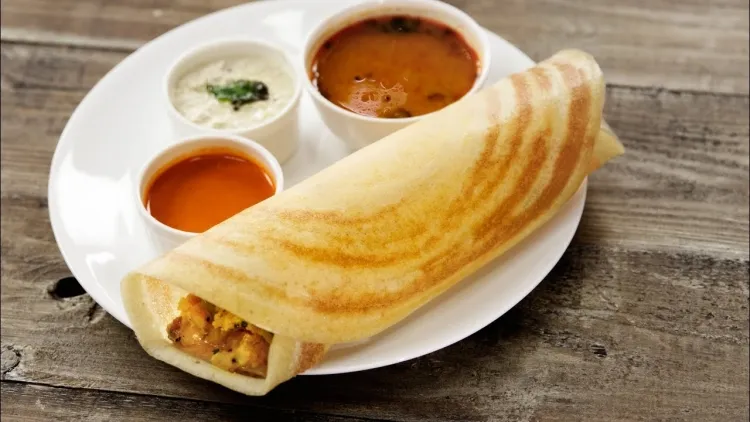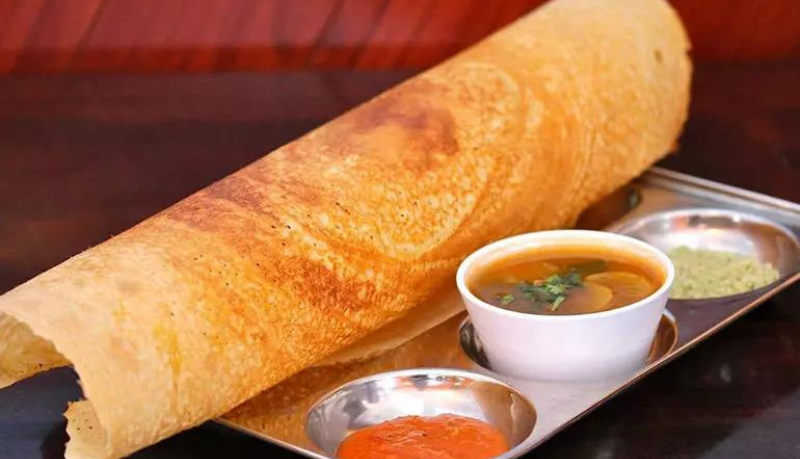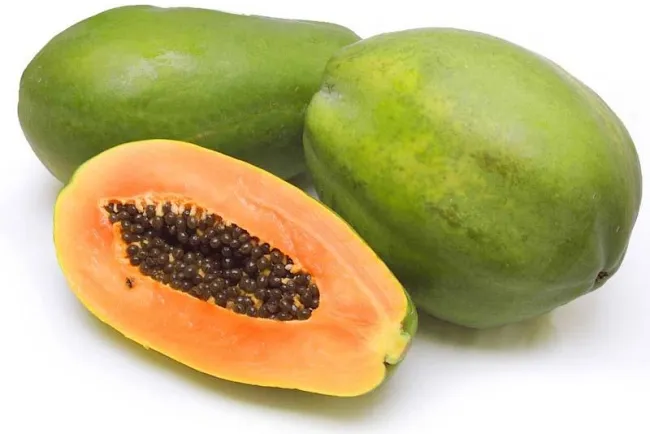Dosa: A Culinary Journey Through Time...!!!
Whether you enjoy it plain or with a variety of fillings and accompaniments, dosa offers a unique gastronomic experience that transcends cultural boundaries.

The History of Dosa
Dosa, a quintessential element of South Indian cuisine, boasts a rich history that spans thousands of years. It is believed to have its origins in Tamil Nadu or Karnataka, two southern states of India, with references found in ancient Tamil literature. Over the centuries, dosa has evolved and diversified, resulting in numerous regional variations and styles.
Ingredients and Preparation
The traditional dosa is a thin, crispy crepe crafted from fermented rice and urad dal (black gram) batter. The fermentation process, which typically takes around 6-8 hours, is crucial as it imparts the characteristic tangy flavor and ensures the dosa is light and crispy. Here’s a brief overview of the ingredients and preparation process:
Ingredients:
-
Parboiled rice
-
Urad dal (black gram)
-
Fenugreek seeds
-
Salt
-
Water
Preparation:
-
Soaking: Rice, urad dal, and fenugreek seeds are soaked separately for several hours.
-
Grinding: The soaked ingredients are ground into a smooth batter, adding enough water to achieve the desired consistency.
-
Fermentation: The batter is left to ferment overnight or for 6-8 hours, allowing it to rise and develop a tangy flavor.
-
Cooking: A ladleful of batter is poured onto a hot griddle (tawa) and spread in a circular motion to form a thin crepe. It is cooked until it becomes crispy and golden brown.

Types of Dosa
While the classic plain dosa remains a favorite, there are countless variations to explore, each offering a unique taste and texture. Some popular types of dosa include:
-
Masala Dosa: Filled with a spiced potato filling, this is one of the most popular and widely recognized types of dosa. The filling typically consists of boiled potatoes, onions, green chilies, and spices.
-
Rava Dosa: Made with semolina (rava), rice flour, and all-purpose flour, this dosa is known for its lacy, crispy texture. The batter does not require fermentation, making it a quick and easy option.
-
Set Dosa: These are soft, fluffy dosas, usually served in a set of three. The batter is thicker, and the dosas are smaller in size.
-
Neer Dosa: A specialty from Karnataka, neer dosa is made from rice batter and has a soft, melt-in-the-mouth texture. The batter is very thin and does not require fermentation.
-
Pesarattu: Originating from Andhra Pradesh, pesarattu is made with green gram (moong dal) and is often served with upma (savory semolina pudding) and ginger chutney.
-
Onion Dosa: Finely chopped onions are sprinkled on the dosa while it's cooking, adding a sweet and savory crunch.
-
Cheese Dosa: A modern twist on the traditional dosa, grated cheese is added on top, making it a favorite among children and cheese lovers.
-
Paper Dosa: As the name suggests, this dosa is paper-thin and very crispy. It is usually served as a giant roll or folded into a triangular shape.
Serving and Accompaniments
Dosa is typically served with a variety of accompaniments that enhance its flavor. The most common sides include:
-
Coconut Chutney: Made from freshly grated coconut, green chilies, and tempered with mustard seeds, curry leaves, and dry red chilies.
-
Tomato Chutney: A tangy and spicy chutney made from tomatoes, onions, and spices.
-
Sambar: A lentil-based vegetable stew made with tamarind, spices, and vegetables like drumstick, carrots, and onions.
-
Mint Chutney: A refreshing chutney made from fresh mint leaves, coriander, and green chilies.
Cultural Significance
Dosa holds a special place in South Indian culture and is more than just a breakfast dish. It is an integral part of festivals, celebrations, and daily meals. The process of making dosa, from grinding the batter to cooking the crepes, is often a communal activity that brings families together.
Global Appeal
In recent years, dosa has gained popularity worldwide, thanks to the global spread of South Indian cuisine. It is now a common feature on the menus of Indian restaurants around the world, and many people have embraced it as a healthy and delicious meal option.
Nutritional Benefits
Dosa is not only delicious but also nutritious. It is rich in carbohydrates and proteins, making it a balanced meal. The fermentation process enhances the nutritional profile, making it easier to digest and promoting gut health. Additionally, dosas are naturally gluten-free, making them suitable for people with gluten intolerance.

With its rich history, diverse variations, and delightful taste, dosa is truly a culinary marvel. Whether you enjoy it plain or with a variety of fillings and accompaniments, dosa offers a unique gastronomic experience that transcends cultural boundaries. Its versatility, simplicity, and nutritional benefits have made it a beloved dish, not just in South India, but around the globe.
What's Your Reaction?

















